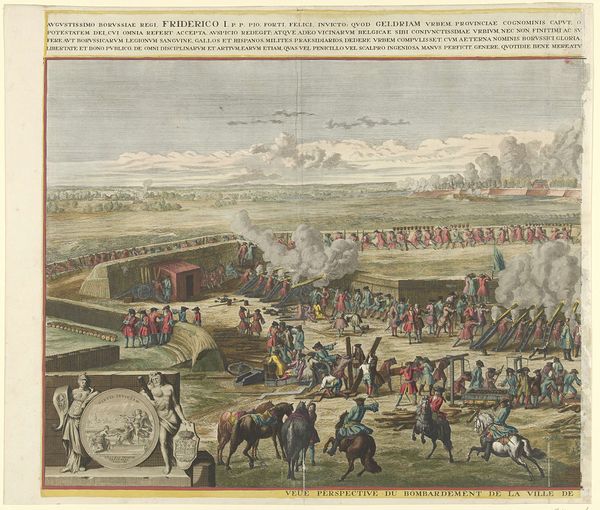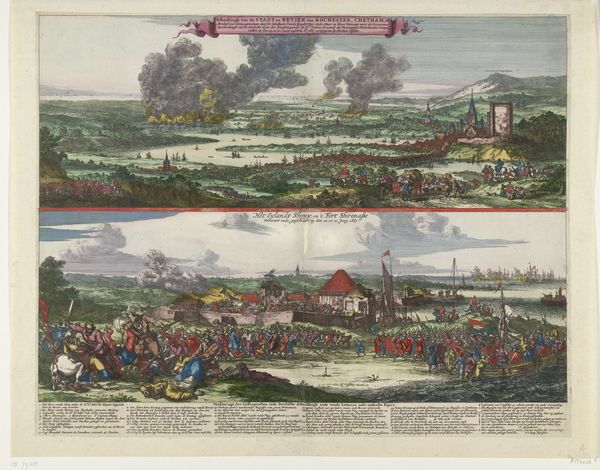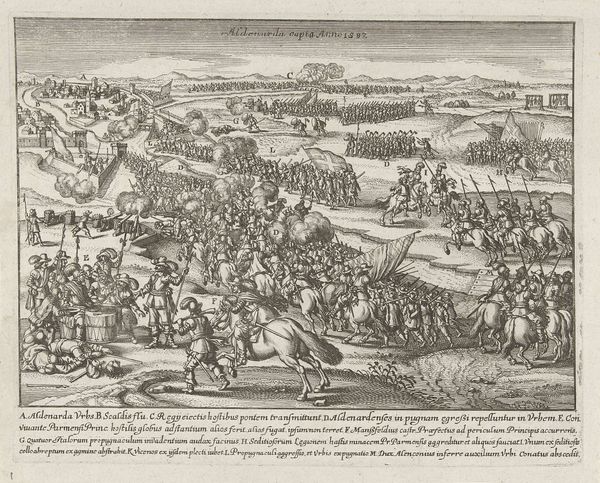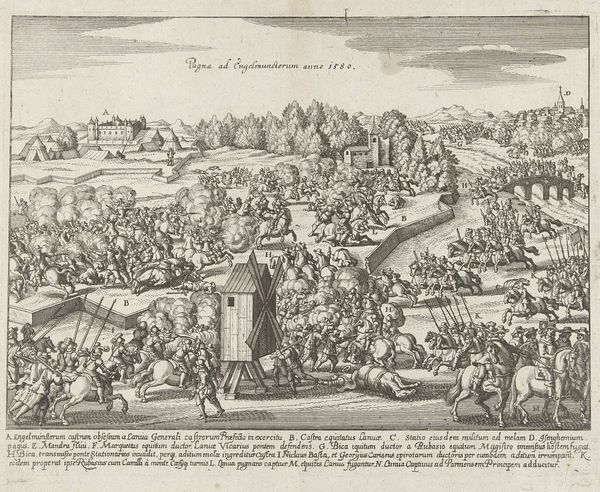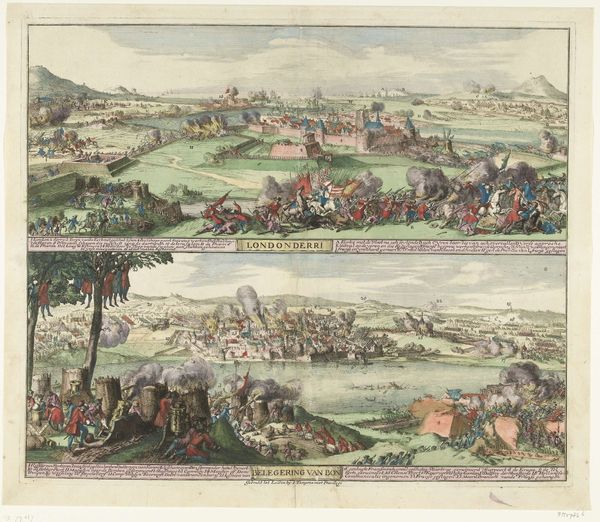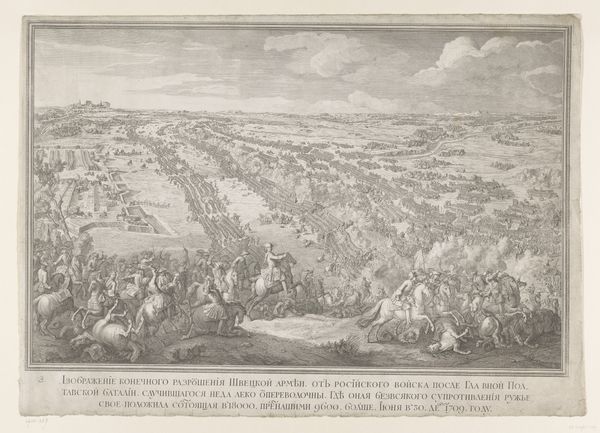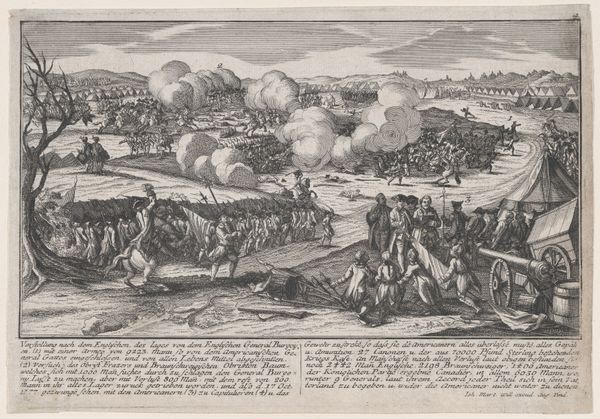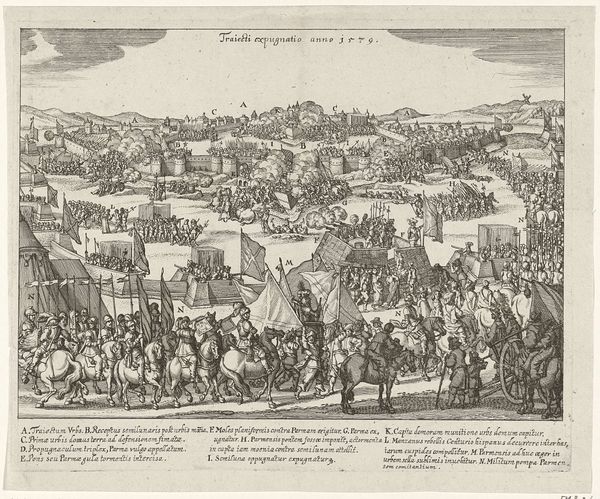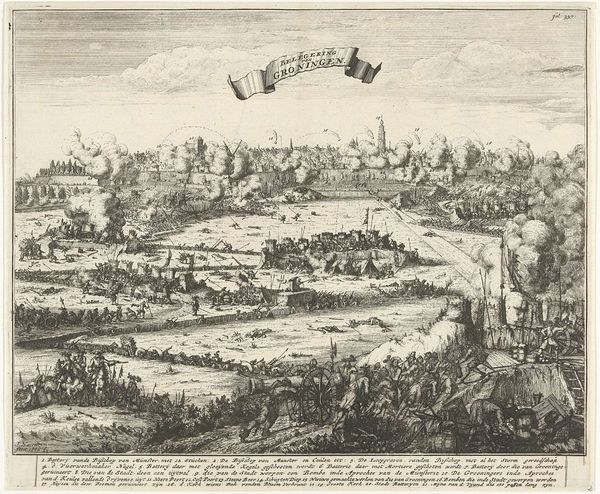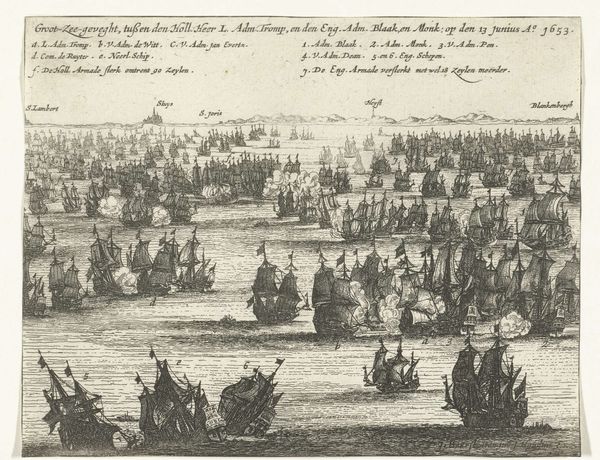
print, engraving
#
baroque
# print
#
landscape
#
cityscape
#
history-painting
#
engraving
Dimensions: height 539 mm, width 910 mm
Copyright: Rijks Museum: Open Domain
Curator: Here we have Jan van Huchtenburg's "Bombardement van Geldern," a print from 1703 held at the Rijksmuseum. It depicts, as the title suggests, the bombardment of the city of Geldern. What are your first impressions? Editor: Well, immediately, the amount of labor involved is astounding. The sheer quantity of individuals participating and how precisely they are placed is amazing, especially considering the violence being inflicted in the foreground. The engraving really emphasizes their work. Curator: Absolutely. Huchtenburg was known for his depictions of battles and military scenes. What’s fascinating here is the attempt to capture the scale of the siege and to almost glorify the process through meticulous detail. The clean lines feel propagandistic in a way. Editor: Propagandistic, certainly. Look at the organization of labor. Each group, defined by material conditions and rank, contributing to the machinery of war, with that clear separation between officers and ordinary soldiers… it's a system perfectly rendered in printmaking. Curator: The choice of print is key here. Prints allowed for mass production and dissemination. This image wasn’t just about documenting an event; it was about circulating a particular narrative of Prussian military prowess to a wide audience. Editor: Indeed, consider the physical act of producing multiple identical copies. The labor wasn't only in the battle itself but in perpetuating its image. Each copy extends the violence and labor even further through distribution. Curator: There’s a tension, isn’t there, between the detailed depiction and the flattening effect of the medium. The print medium provides this incredible distribution potential that painted artworks simply don't afford. The image became an artifact unto itself. Editor: Right. Print allows a very efficient delivery of visual information with a permanent durability. Huchtenburg transformed destruction into a commodity of visual consumption that supported and mirrored existing power dynamics. It truly frames the process of war itself. Curator: Looking at the composition, the ordered rows of soldiers contrast so dramatically with the chaos in the distance. It seems almost staged in its presentation, even calculated. A history not to be forgotten for many people. Editor: It truly calls on all to remember, with an eye cast directly on production, labor, and how each relates. It has been a rewarding conversation.
Comments
No comments
Be the first to comment and join the conversation on the ultimate creative platform.
